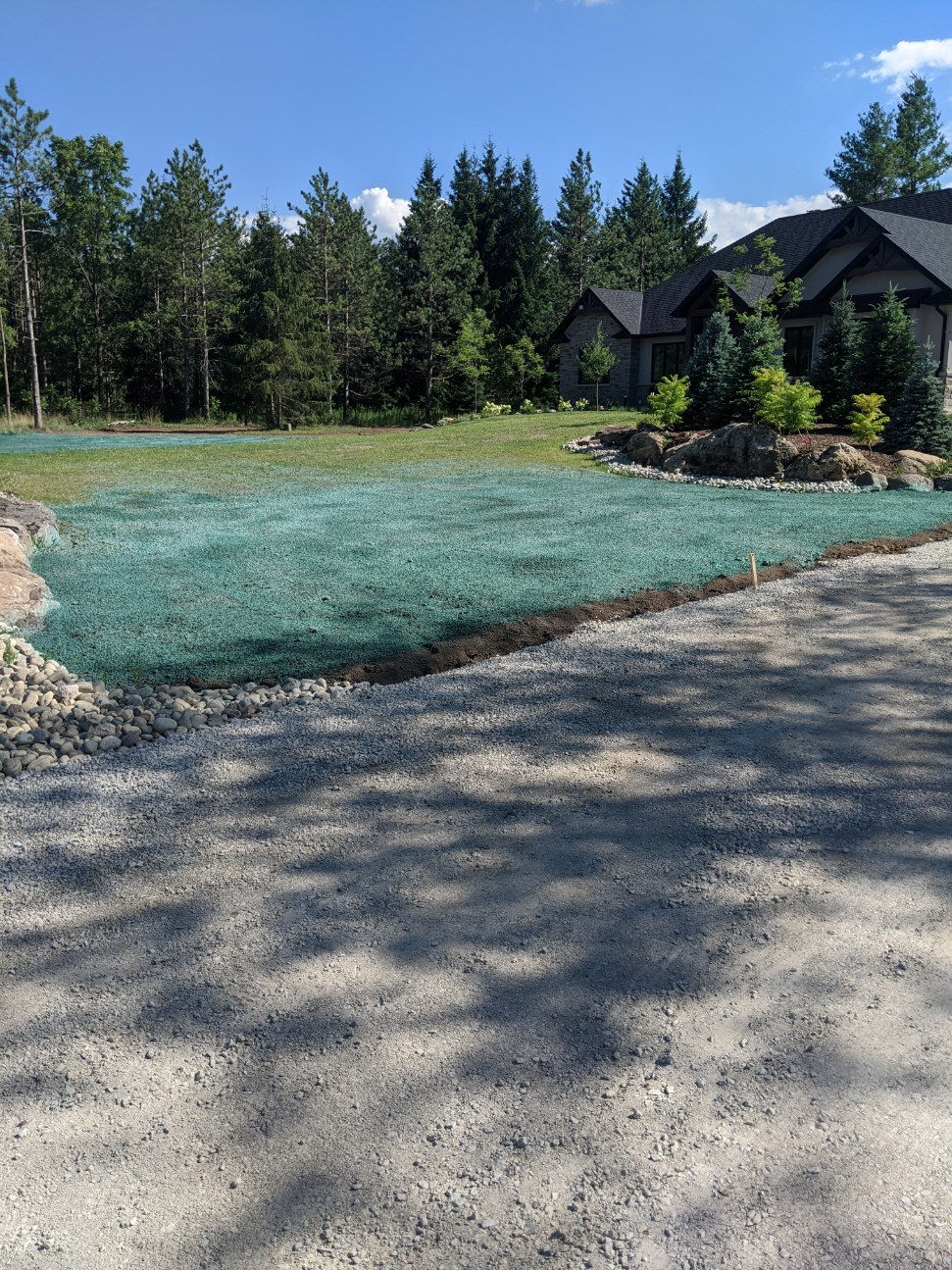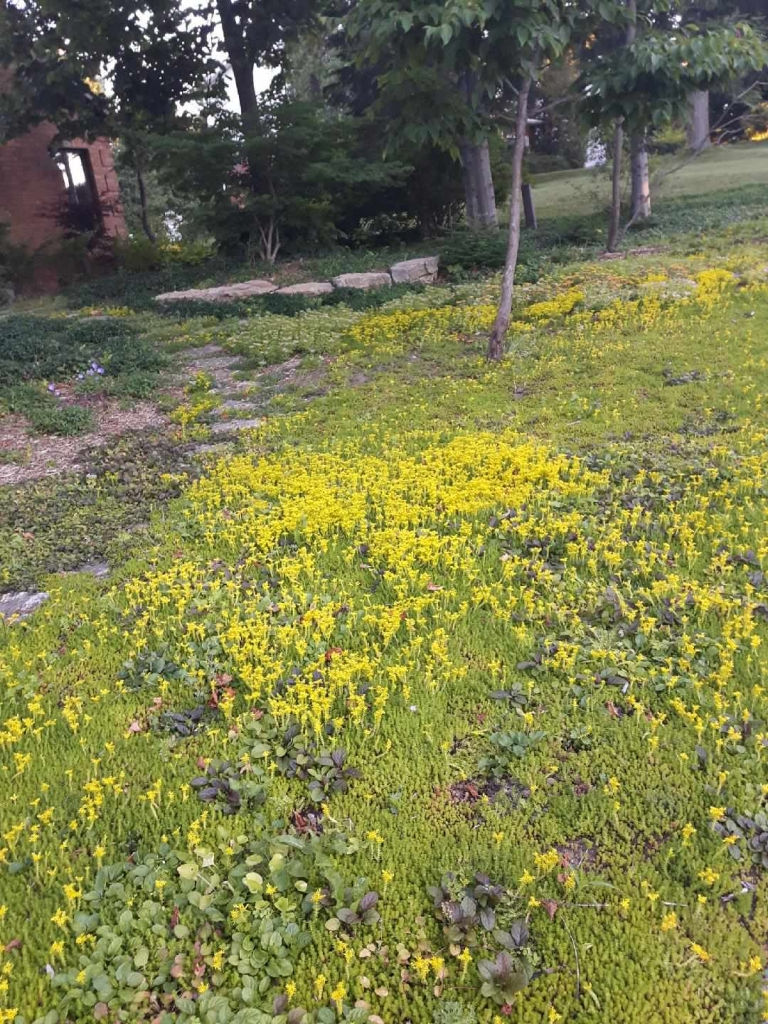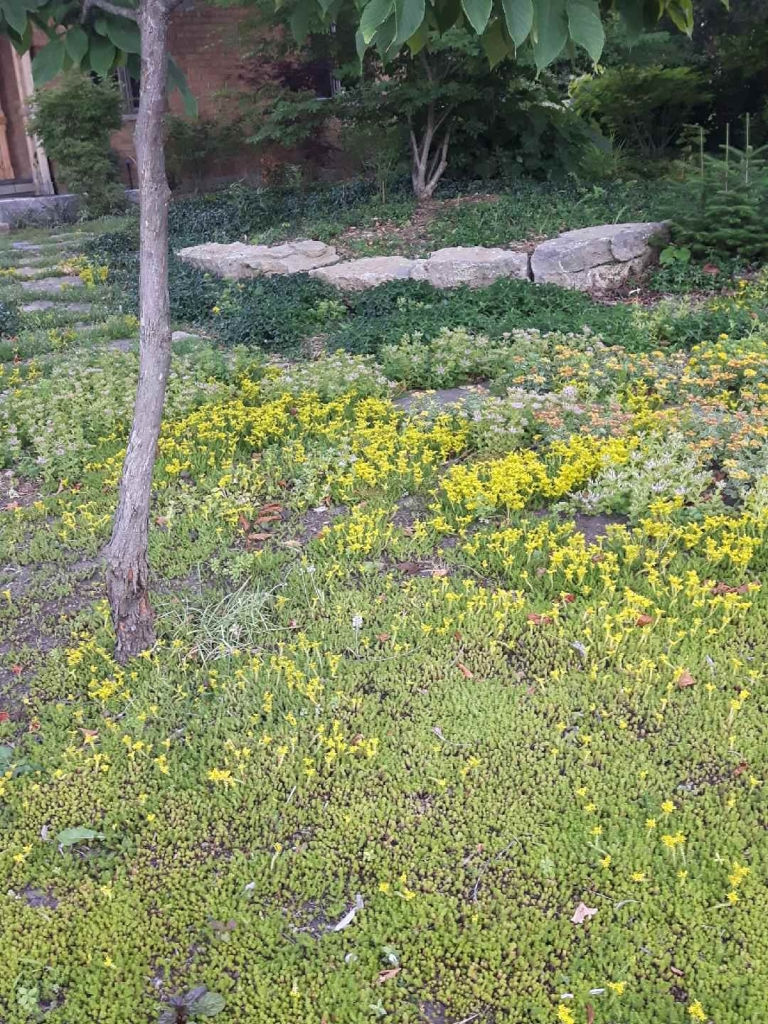Turfgrass:time to rethink the lawn
- Tom Cavan

- Feb 6, 2021
- 5 min read
My education in turfgrass came very early in life, at the ripe age 6-1/2 yrs I was promoted from lawn rake to a push mower to cut a farm lawn area 1/2 acre with lots of trees and hedges to dodge and at first, the power surging from the 5 HP Briggs and Stratton empowered me with confidence. Truth be told I was scared sh__less the first time, then became quite effective(in my youthful mind) cutting patterns and shapes which all looked like snake tracks. When I was 9 years old my mother would regularly drop my older sister Ellen (11) and me off at Trafalgar Golf Course to play golf. I think there were more reasons than sport as to why this is where Ellen had to babysit me all those summer days. Parents hoping that we would meet new friends, learn good manners (and it was only $50 annually) as a junior, and could play all we wanted thru the week and so we did, we would zig-zag around the course playing whichever hole didn't have any golfers on it so we wouldn't get in trouble for not adhering to the dress code. It was more like a cow pasture compared to courses of today. So off we would go and once out of sight we would take off the goofy shoes and play barefoot, you can't take the country out of the boy that fast! dressed in polyester looking like a miniature Jack Nicholas but swinging like the Tasmanian Devil (initially). I played as much golf as could until the age of 19. It was during those years I became proficient as a golfer and educated by osmosis in turfgrass varieties with specific attributes, land contours, irrigation, fertilizers, pesticides, and how to mind my manners. When I wasn't golfing I was working at our family garden centre talking turf, selling turf, lifting turf products. My Dad sold tractor-trailer loads of garden related products as it was fashionable to have a manicured lawn. I became a teenage forklift, which was great for my game. I was obsessed and couldn't wait to get back out there.

Golf courses today are horticultural marvels and many are now returning to environmentally conscience playgrounds with protected wetlands and sustainable practices, baby steps for sure as the debate towards a time not too far into the future when precious water will be designated more sustainably (hopefully sooner than later) and not luxurious lawns with 18 outdoor pool tables and the likes, sad but true. Quote: Golf, a good walk ruined. Author Mark Twain
At age 19 I sold my clubs for horticultural textbooks and began my formal horticultural education at the University of Guelph where I met Dr. Jack Eggins alias "Bags-of-Knowledge" turfgrass expert extraordinaire. He preached a very simple starting point that grass is not a carpet but quite simply thousands of plants competing for air, sun, water, and nutrients (fertilizer). Depending on what the function was for the specific type of grass determined its requirements of maintaining that perfect spread you see on golf courses and other high maintenance sports turf. We studied soil science, elemental chemistry, pesticides (insecticides, herbicides, fungicides, miticides) I became hooked on horticulture and turfgrass was a very important component of my education. I graduated with honours in Horticulture (much to the surprise of everyone) and so found my calling.
For 33 years I maintained a schedule 4 pesticide license and sold these products to homeowners with all the safety precautions necessary to minimize the effect on the environment. I have always been an advocate of the organic and practical alternatives vs chemical warfare and knowing all of that was not a sustainable approach and besides that, the smell tells all!! as it bleaches your senses. I always gave the customer the option of natural ingredients over nuclear waste (that's what I call pesticides) The lawn enthusiasts bought the chemical solutions which where easier and more affordable while the learned gardeners bought compost, peat moss, bonemeal, Diatomaceous Earth, and the likes. The sales reps. for products like CIL told me I was missing out on big profits from sales compared to ALL the other garden centres and my father said my horticultural conscience would be my demise......Well, I am not done yet!! and I still preach the natural approach.

For large areas, Hydro-seeding is the smart choice, with organic slurries that protect the seed of choice and a fraction of the cost of sod.


1st and foremost turfgrass is quite simply a groundcover and in my opinion, its primary attribute is erosion control, native grasses do not need fertilizers, pesticides or irrigation and with the proper grass selection nor does your lawn. The #1 evil to the grasses we utilize as a lawn is compaction, so you need to aerate(core aerating every spring or fall the best practice ) to alleviate compaction and allow even air and water infiltration and the release of gasses caught in the thatch layer (this is a thin layer of decomposing grass blades from constant cutting) which is very beneficial as it retains moisture, protects the roots and provides a future source of nitrogen which to say is the #1diet of grass. Also, core aerating is like getting free topdressing, after you aerate your lawn will look like its covered in worm castings, you just leave them to dry and when you cut the lawn it breaks down nicely. Avoid raking up the cut grass whenever possible as it removes free nitrogen from your lawn. Keep your cutting height at 4" during warm conditions and during drought don't cut at all, just leave alone and back away from the lawnmower!. Grass has the ability to go dormant and return like the saying goes" as perennial as the grass" doesn't just refer to coming back after winter months. Heck if there is a crack of sediment in the 401 grass will grow there!!
2nd and equally important is grass type, I know everyone loves the rich blue hue of Kentucky Bluegrass, sorry it belongs in Kentucky not Ontario, its high cost, high maintenance, and also a favourite diet of white grubs. Now no slight to this #1 grass product as it is the front runner for farm production, cutting, stacking and shipping, rich in colour, no other grass competes with its profitable attributes, but once it's on your doorstep you have to act fast water efficiently and often. It is high maintenance and over time the most costly bar none.

After installing this amazing project we laid down Kentucky Bluegrass sod on the construction area, and in short order, the grubs came quickly decimated the sod leaving the non-irrigated diversified grass and clover alone.


We over-seeded the area in September with turf-type ryegrass and my fav creeping red fescue and by October the lawn was back and matched the existing lawn area. Kudos to the owner for diligent aerating!!
Chose turf-type perennial Ryegrass and Creeping Red Fescue with the addition of Clover for a low maintenance lawn, no matter what the SQFT of your property. These grass types germinate quickly appreciate a higher cutting height, recover from drought and during drought the clover stays green! Clover also fixes nitrogen in the soil for the grass to utilize. Whether your lawn is small or stately you can have a beautiful low maintenance non-irrigated sustainable turf without breaking the bank.
NOTE* coming soon my Blog on fertilizer, its a game changer!
And now for something completely different: NO LAWN!
Why not use the alternative groundcovers available.


Sedums and Thyme species in the sun, Ajuga, Sweetwoodruff, and Sagina moss in the shade with stepping stones provides curbside appeal with little effort once established.


Vinca in deep shade where little else will flourish. Plant fall bulbs like Muscari, Crocus, Galanthus and your property will spring into action, sustain the summer heat without watering, no more weekly deployment sweating behind a combustible rotary apparatus, inhaling petrochemicals, scaring even the bravest of dogs, you get the picture which says a 1,000 words.





Comments